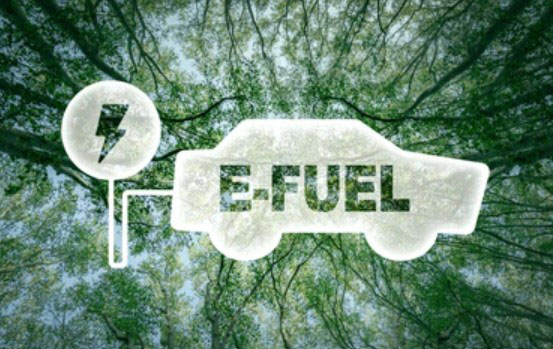January 1, 2022
If the United States is going to transition to a transportation market that is comprised of a significant number of electric vehicles (EVs), virtually everyone agrees that a robust charging system must be deployed to assure drivers they will always have access to energy. President Biden has set a goal for installing 500,000 chargers by 2030 and, in November 2021, Congress passed the Infrastructure Investment and Jobs Act which authorizes $7.5 billion to support installation of electric vehicle service equipment (EVSE), otherwise known as EV chargers. In anticipation of these developments, and to provide some objective insight to government leaders responsible for leveraging these funds, the Transportation Energy Institute Electric Vehicle Council earlier this year commissioned a study evaluating which policies and programs seem to be the most effective in supporting EVSE deployment. The report, written by the consulting firm ICF, will be published in early 2022. In this edition of The Commute, I want to share with you a preview of what they found regarding programs that help fund EVSE deployment.
(Readers are also encouraged to listen on our Carpool Chats episode featuring ICF’s Jonathan Norris, one of the principle authors of the report.)
To answer the key question, what policies or programs have been most effective in supporting EVSE deployment, the research team employed a two-prong approach: quantitative and qualitative. In the report, ICF described the approach as follows:
“The project team used a mix of quantitative and qualitative methods to collect and analyze data and address key questions regarding the effectiveness of various policy types in increasing EVSE station deployment. Quantitative methods included collecting secondary data from various sources and statistical analysis to examine the association between variables of interest. Qualitative methods included semi-structured interviews with government officials, regulators, electric utility officials, and business leaders to obtain their insights and perspectives regarding policy approaches to increasing EVSE deployment. Both quantitative and qualitative results were analyzed and interpreted separately, as well as jointly to corroborate findings across methods.”
I am not going to dwell on the methodology in this piece (you can read the full report when it comes out later), but will instead focus on two of the key findings that struck me as most relevant to the current efforts being supported by the federal government – the importance of EVSE funding and the program elements that can best leverage such funding.
Funding Is Important for EVSE Deployment
Funding from both public and private sources is often cited as one of the most important drivers for EVSE deployment and this new report found significant statistical correlations between incentive-based programs and EVSE market development. Meanwhile, through August 2021, 31 states had announced public funding to support EVSE deployment. With enactment of the federal infrastructure bill, the available resources have been greatly expanded. But just throwing money at the market is not enough; it is also important to consider how these funds are invested.
ICF looked at programs in effect between 2016 and 2020 to determine how effectively funds were leveraged to build infrastructure. When the quantifiable data is closely analyzed to evaluate the correlation between money and charging stations built, it suggests that public funding may account for roughly 26% of the variation in charging station deployments across the states. The data shows that on average a $1.00 per capita investment may yield roughly six (6.48) EV charging station deployments per 100,000 people. So, the question is how can these investments be structured to yield stronger results?
Program Design Is Critical
Statistical analysis only takes us so far. For example, it demonstrates that public funding is important to EVSE deployment, but it does not provide real guidance regarding how those funds should be deployed. Therefore, the research team asked for input from individuals responsible for administering funding programs, as well as beneficiaries, to determine what characteristics seem to be most effective in getting chargers installed.
In general, all interviewees stated that programs are more effective when they are tied to deadlines that help accelerate their execution, a lesson learned from evaluating the use of VW settlement funds in various states. Interviewees stated that funding should support both EVSE deployment and operation, and noted that grants, rebates, and tax incentives have been effective mechanisms – a conclusion supported by the quantifiable data analyzed in the report. They also said that programs with a higher degree of flexibility, clear guidance, and simplicity for applicants are more effective than overly prescriptive or complicated programs.
The interviews uncovered some specific guidance regarding what program elements have proven effective and those that have compromised the value of the program:
Features of Programs that are Effective
- The majority of interviewees stated that rebates and incentives are considered the most effective approaches to disburse funding, because they are simple processes for both the applicant and the agency administering the program.
- Funding administered by state agencies is considered easier to work with compared to federal funding because state agencies are reported to have a higher degree of flexibility in designing a program. Interviewees stated that this can reduce barriers for applicants and make the programs more time- and cost-effective.
- All EV service providers stated that federal tax credits for EVSE purchase and installation are among the most effective mechanisms to provide long term, stable, and financially significant incentives for the industry.
- Programs that allow matching public and private funds were almost unanimously stated to be effective at increasing EVSE deployment, especially if accompanied by clear timelines.
Features of Programs that are Ineffective
- Program delays due to slow funding disbursement or lengthy application processes can translate into significant costs for the applicant. Reportedly, these delays can be large enough to make funding inefficient from a business perspective and diminish overall program effectiveness. Per the interviewees, federal grant programs are reportedly often designed in a way that requires significant administrative work, with funding disbursement “taking too long to translate into useful action,” as one interviewee said.
- Lack of flexibility in program design and overly prescriptive programs can also diminish overall effectiveness. One example of an overly prescriptive program, as shared by interviewees, is one that pre-selects sites for EVSE installations without adequate site assessment or consideration for operational realities such as the presence of nearby businesses, potential utilization rates, etc.
- Interviewees reported that clear instructions and proper guidance are essential elements in program design. Lack of knowledge and prior experience with EVSE were reported to be deterrents to potential site hosts and may impede EVSE deployment if programs are not accompanied by education and outreach initiatives.
Additional takeaways from the interviews conducted are included in the final report, but the observations presented here are extremely relevant to the challenge facing the U.S. government right now – how to effectively disburse the approved funds and get the greatest value from the investment.
Demand Charges Require More Study
This report was designed to evaluate how different programs and policies affect EVSE deployment. During the interview process, the impact of demand charges on operational expenses and overall business return on investment was raised consistently. In fact, the report states “One interviewee defined demand charges as “the biggest existential threat for the economic viability for EVSE implementation, especially DC fast chargers” while others suggested that rate reform is “the most important piece of the puzzle to guarantee a successful buildout of EV charging infrastructure and widespread EV adoption.”
To better understand the relationship between demand charges and EVSE deployment, ICF conducted a significant evaluation of demand charges and EVSE installations by zip code and found no statistical correlation – the number of chargers deployed in the past five years was correlated to the level of demand charges in a given zip code. However, the study brings in results from a third-party report that clearly demonstrates that demand charges do affect profitability, depending on equipment utilization and power capacity. How demand charges affect installation decisions is not covered in the upcoming Transportation Energy Institute report, but it is a critical element that must be considered when evaluating programs to encourage deployment and when potential station hosts are evaluating their economic return.
Other Elements of the Report
This column focused on the funding elements evaluated within the pending report because these are the most relevant to the current situation stemming from the $7.5 billion federal authorization. But the ICF team looked at a variety of other program elements that can affect EVSE deployment, such as:
- The effectiveness of air quality and climate-related regulations
- The impact of implementing multiple programs and the effectiveness of specific program combinations (funding, regulatory, etc.)
- The influence of utility rate setting practices (i.e., demand charges) on deployment
- The impact of such programs on the number of charging stations installed per person
- The impact of such programs on overall EV market development, which incorporates the number of registered EVs
It should also be noted that the President’s goal of deploying 500,000 charging stations by 2030 may not be sufficient. In a related research project under development, the Transportation Energy Institute asked how many chargers will be needed, when, where and what type in different use case scenarios. The total number of stations to support a significant conversion of the fleet to electric vehicles stands greater than 1 million. Scalability and timing of deployment will be essential to provide the flexibility within the market to satisfy consumer demands. Hopefully these projects will provide some insight to help guide program developers to best support the market.





